We saw lots of different fish diving at Blackbird Caye in Belize. There weren't a lot of big fish, but that's probably due to people fishing, since it's not a protected area. My photographs only covered a small fraction of the types of fish - just the ones that cooperated!
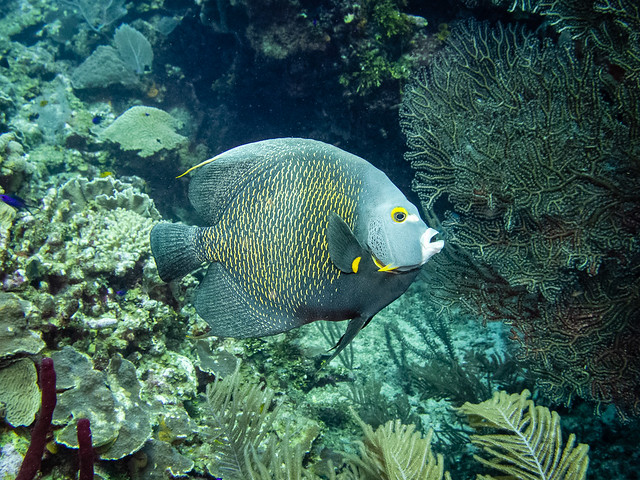
It took me a while, but I think I identified them all. Some are easy, like this French Angelfish, but others are tough. It's a bit like bird watching, except there is much variety.
Some of the fish hide, like this White-spotted toadfish (found only in Belize). We would never have seen them if our dive master didn't spot them.
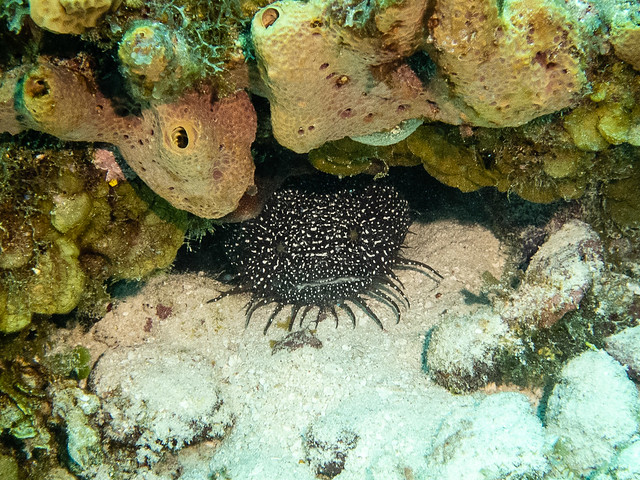
The dive masters would feed the toadfish chunks of lionfish that they would spear. Lionfish are a destructive invasive species so they try to get rid of them. It's too bad because they are beautiful fish.

The Peacock Flounders are another one that can be hard to spot. They are in the left-eye flounder family with both eyes on top of the left hand side of their heads. Baby flounders have one eye on each side of their bodies like ordinary fish, and swim like other fishes do, but later on, as they are becoming adult, the right eye moves to the left side, and they start to swim sideways, which allows them to settle down flat on the bottom.

With the scorpionfish, often what I'd spot was their fin. Then I'd have to try to see the body it was attached to. The eyes are the other identifiable part.

There were a few larger groupers around, up to about three feet long. This Tiger Grouper was at a "cleaning station" where smaller fish or shrimp will eat their parasites. The small fish will even swim into their mouths or gills to clean. (A certain amount of "trust" is required!)

We also saw Black Groupers, Nassau Groupers, and the related Red Hinds:
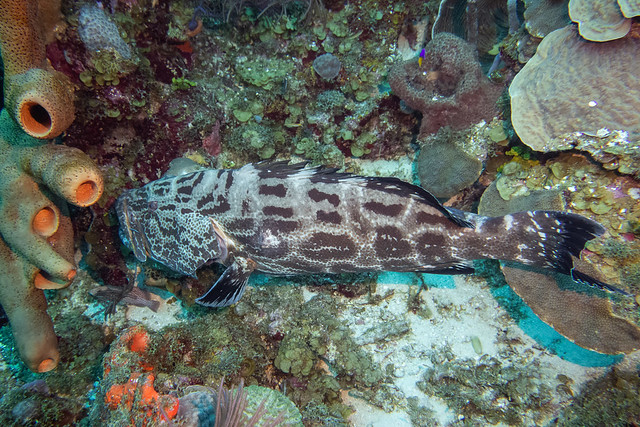


The long skinny Trumpetfish are interesting. They are actually related to sea horses. Sometimes they will hide by positioning themselves vertically in among soft coral. They can also change their color for camouflage.

There are also fish that live in holes they dig in the sand, like this Sand Tilefish (and also jawfish and garden eels)

And big eyed Balloonfish that can puff themselves up - like a balloon to deter attackers.

And so many more ...

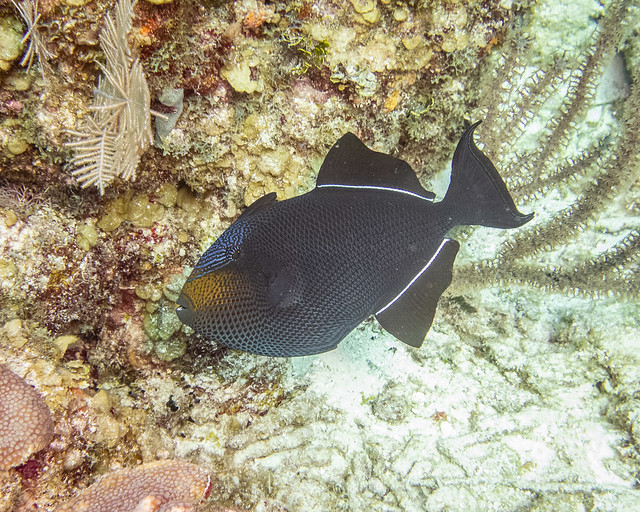
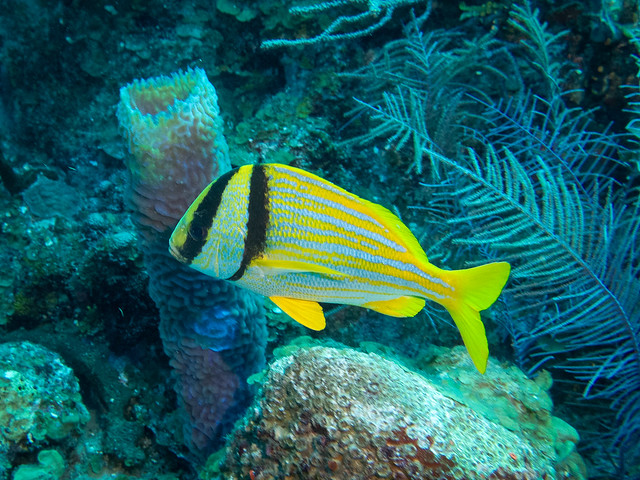
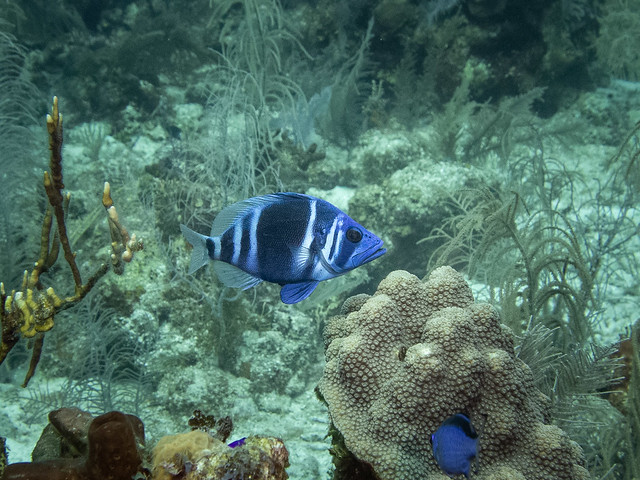
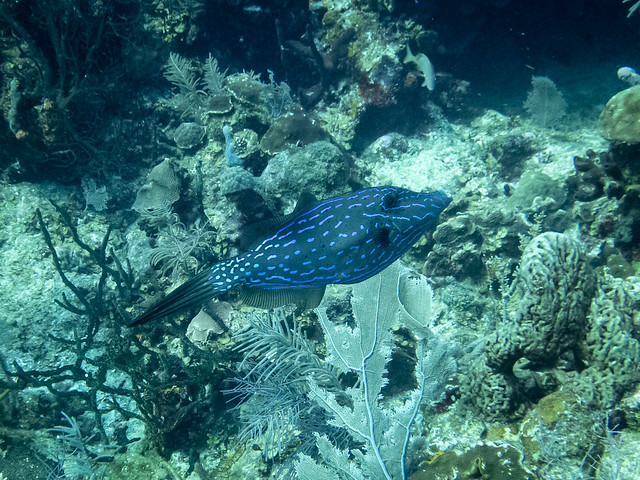

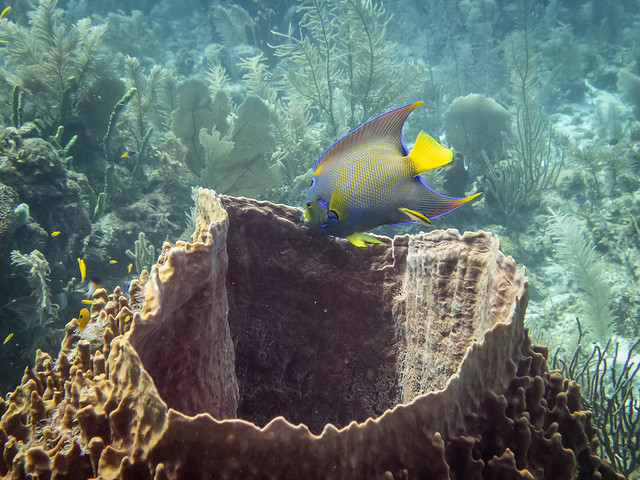

Like birds, male and female fish can look quite different, as with these Stoplight Parrotfish. But unlike birds, parrotfish (and others) can change sex.
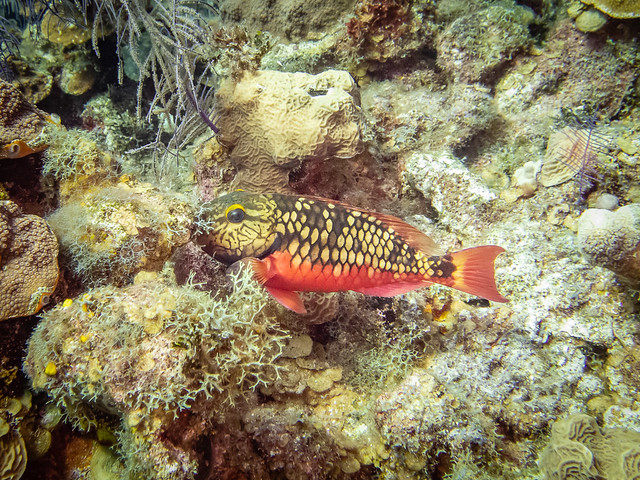

Fish often look quite different as juveniles. For example, juvenile Spotted Drums don't actually have spots:
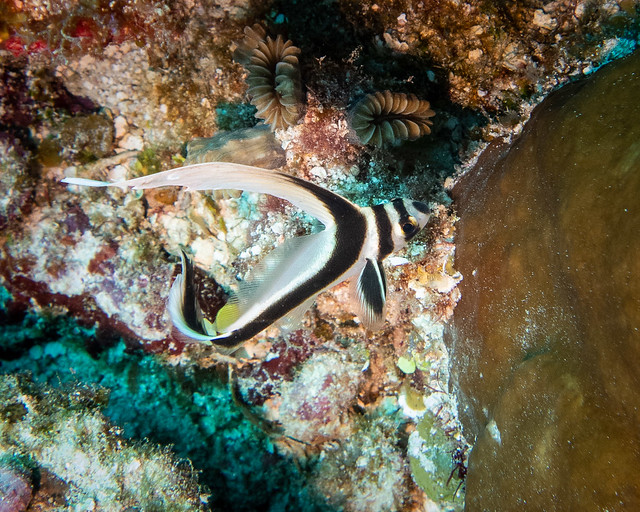
But at least they look a bit like the adults:
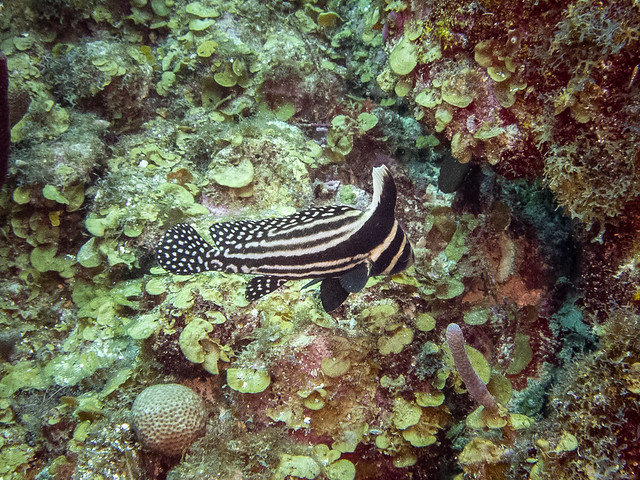
Whereas this juvenile French Angelfish doesn't look anything like the adult (the very first photo in this post)

And of course, there were schools of different fish (like Horse-eyed Jacks) in the more open water:

See all 68 photos in this album

It took me a while, but I think I identified them all. Some are easy, like this French Angelfish, but others are tough. It's a bit like bird watching, except there is much variety.
Some of the fish hide, like this White-spotted toadfish (found only in Belize). We would never have seen them if our dive master didn't spot them.

The dive masters would feed the toadfish chunks of lionfish that they would spear. Lionfish are a destructive invasive species so they try to get rid of them. It's too bad because they are beautiful fish.

The Peacock Flounders are another one that can be hard to spot. They are in the left-eye flounder family with both eyes on top of the left hand side of their heads. Baby flounders have one eye on each side of their bodies like ordinary fish, and swim like other fishes do, but later on, as they are becoming adult, the right eye moves to the left side, and they start to swim sideways, which allows them to settle down flat on the bottom.

With the scorpionfish, often what I'd spot was their fin. Then I'd have to try to see the body it was attached to. The eyes are the other identifiable part.

There were a few larger groupers around, up to about three feet long. This Tiger Grouper was at a "cleaning station" where smaller fish or shrimp will eat their parasites. The small fish will even swim into their mouths or gills to clean. (A certain amount of "trust" is required!)

We also saw Black Groupers, Nassau Groupers, and the related Red Hinds:



The long skinny Trumpetfish are interesting. They are actually related to sea horses. Sometimes they will hide by positioning themselves vertically in among soft coral. They can also change their color for camouflage.

There are also fish that live in holes they dig in the sand, like this Sand Tilefish (and also jawfish and garden eels)

And big eyed Balloonfish that can puff themselves up - like a balloon to deter attackers.

And so many more ...








Like birds, male and female fish can look quite different, as with these Stoplight Parrotfish. But unlike birds, parrotfish (and others) can change sex.


Fish often look quite different as juveniles. For example, juvenile Spotted Drums don't actually have spots:

But at least they look a bit like the adults:

Whereas this juvenile French Angelfish doesn't look anything like the adult (the very first photo in this post)

And of course, there were schools of different fish (like Horse-eyed Jacks) in the more open water:

See all 68 photos in this album
No comments:
Post a Comment